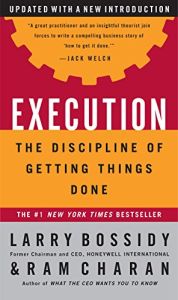Melden Sie sich bei getAbstract an, um die Zusammenfassung zu erhalten.

Melden Sie sich bei getAbstract an, um die Zusammenfassung zu erhalten.
Larry Bossidy and Ram Charan
Execution
The Discipline of Getting Things Done
Crown, 2002
Was ist drin?
All of your company’s plans and strategies mean nothing if you can’t get things done. So, execute.
Recommendation
Most companies, like most individuals, excel at making plans but are not as talented at carrying them out. Thus, execution – the ability to get things done – has become the core of management science. Larry Bossidy and Ram Charan observe that some people grow when promoted to executive leadership, while others merely swell. Those who lose touch with operational realities soon find themselves boldly leading a company going nowhere. The practical value of getting things done must be instilled at every level of your corporate culture. Bossidy and Charan say execution is simply practicing the right techniques with a disciplined approach. Their book can help you turn your plans and strategies into accomplishments and victories.
Summary
About the Authors
Larry Bossidy is chairman and former CEO of Honeywell International. He is the former CEO, COO, or vice chairman of three other major American corporations, including GE. Ram Charan is an adviser to CEOs and senior executives. He is the author of What the CEO Wants You to Know and Boards at Work. He taught at the Kellogg School of Northwestern University and the Harvard Business School. Charles Burck is a former Fortune magazine editor and writer.




































Comment on this summary